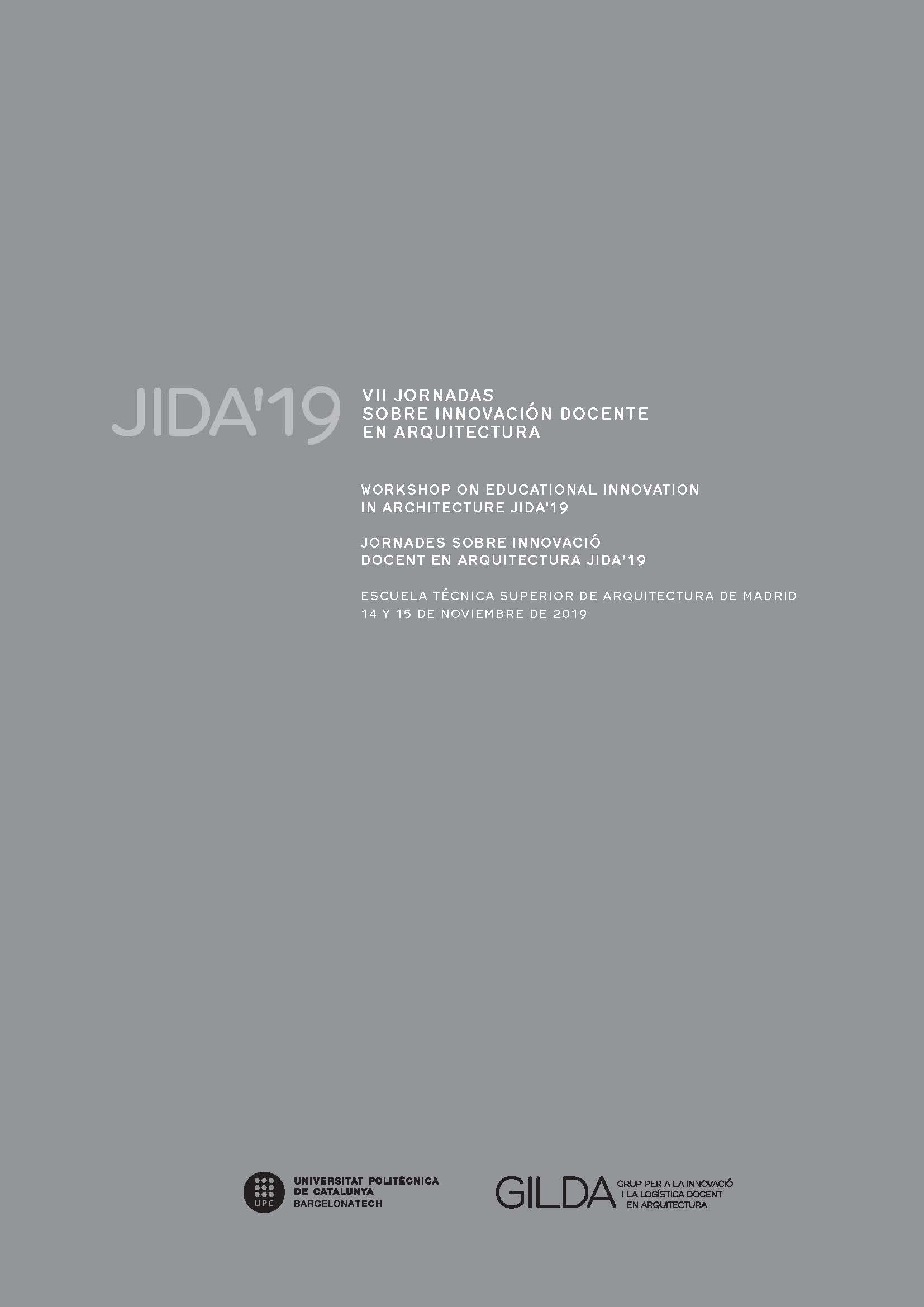Arquitectura ficción: pensamiento lateral para el diseño social del espacio
DOI:
https://doi.org/10.5821/jida.2019.8187Resumen
Este artículo muestra una experiencia pedagógica desarrollada con estudiantes de grado universitario en arte y diseño que pone en práctica herramientas de diseño especulativo. Se trata de una aproximación al diseño crítico que trata de eludir la producción del espacio o los objetos dentro de las convenciones del mercado para apostar por creaciones que movilizan el debate en torno a cuestiones fundamentales que merecen nuestra preocupación y compromiso. Para hacerlo, se utilizan estrategias que desbordan los límites del diseño y que plantean un diálogo narrativo con la realidad. Por ello, las herramientas utilizadas profundizan en la capacidad para enunciar mensajes rompedores con respecto a las narrativas dominantes del futuro, a menudo cargadas de injusticias sociales no visibles y enfocadas en los privilegios del mundo occidental. El método demuestra una aproximación lateral al hecho creativo que potencia los valores sociales.
Citas
AUGER, J.H. (2012). Why Robot? Speculative Design, the Domestication of Technology and the Considered Future. Tesis doctoral. Londres: The Royal College of Art. <https://www.researchgate.net/publication/323639975_Why_Robot_Speculative_design_the_domestication_of_technology_and_the_considered_future> [Consulta: 15 de mayo 2019]
BARAD, K. (2003). “Posthumanist performativity: Toward an understanding of how matter comes to matter†en Signs: Journal of women in culture and society, vol 28, issue 3, p 801-831.
BLEECKER, J. (2009). Design Fiction. A short Essay on Design, Science, Fact and Fiction. San Francisco: Near Future Laboratory.
BRUGELLIS, P., PETTENA, G. y SALVADORE, A. (2017). Radical Utopies: Archizoom, Buti, 9999, Pettena, Superstudio, Ufo, Zziggurat. Macerata: Quodlibet.
BUCHANAN, R. (2004). “Human-Centered Design: Changing Perspectives on Design Education in the East and West†en Design Issues, vol 20, issue 1, p 30-39.
CANDY, S. (2010). The Futures of Everyday Life: Politics and the Design of Experiential Scenarios. Tesis doctoral. Manoa: University of Hawai. <https://www.researchgate.net/publication/305280378_The_Futures_of_Everyday_Life_Politics_and_the_Design_of_Experiential_Scenarios> [Consulta: 15 de mayo 2019]
CLARKE, A.J. (2018). “Fail Again, Fail Better†en Victor Papanek: The Politics of Design. Weil am Rhein: Vitra Design Museum, p 14-25.
COOK, P. (1999). Archigram. New York City: Princeton Architectural Press.
CROSS, N., DORST, K. y ROOZENBURG, N. (ed.). (1992). Research in Design Thinking. Delft: Delft University Press.
DE BONO, E. (1967). The use of lateral thinking. London: Cape.
DE BONO, E. (1985). Six thinking hats: An Essential Approach to Business Management. New York City: Little Brown & Company.
DUNNE, A. (2008). Hertzian Tales. Electronic Products, Aesthetic Experience and Critical Design. Cambridge: MIT Press.
DUNNE, A y RABY, F. (2013). Speculative Everything. Design, Fiction, and Social Dreaming. Cambridge: MIT Press.
FEIREISS, L. y KLANTEN, R. (2009). Beyond architecture: Imaginative Buildings and Fictional Cities. Berlin: Gestalten.
FERGUSON, N. (2011). Virtual History: Alternatives and Counterfactuals. London: Penguin Books.
GORDON, W.J.J. (1961). Synectics, the Development of Creative Capacity. New York City: Harper.
H. FALAGAN, D. (2018) “Disseny, educació i societat. Conversa amb Curro Claret†en El disseny qüestiona. Barcelona: Edicions de l’Escola Massana - Edivi, p. 40.
KRIPKE, S.A. (1975). “Outline of a Theory of Truth†en Journal of Philosophy, vol 72, issue 19, p 690–716.
LATOUR, B. (1996). “On actor-network theory: A few clarifications†en Soziale Welt, vol 47, issue 4, p. 369-381.
MALPASS, M. (2017). Critical Design in Context. History, Theory, and Practice. London: Bloomsbury Academic.
MANAUGH, G. (2009). The BLDGBLOG Book. Architectural Conjeture, Urban Speculation, Landscape Futures. San Francisco: Chronicle Books.






















